#Eugene Cernan
Explore tagged Tumblr posts
Text

Apollo 17 on the surface of the Moon at Taurus–Littrow, December 13, 1972. Mission commander Eugene Cernan is seen here next to the Lunar Roving vehicle.
Photo taken by lunar module pilot Harrison 'Jack' Schmitt.
16 notes
·
View notes
Text


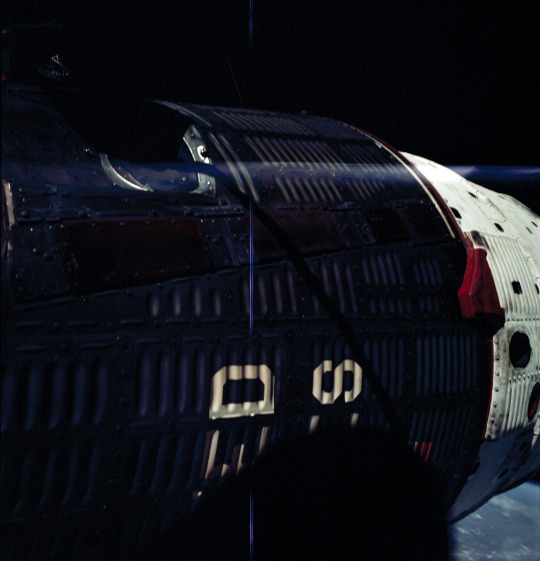
Astronaut Eugene A. Cernan's view from and of the Gemini-9A spacecraft during his extravehicular activity (EVA). Taken during the 32nd revolution of the 72-hour, 21-minute spaceflight.
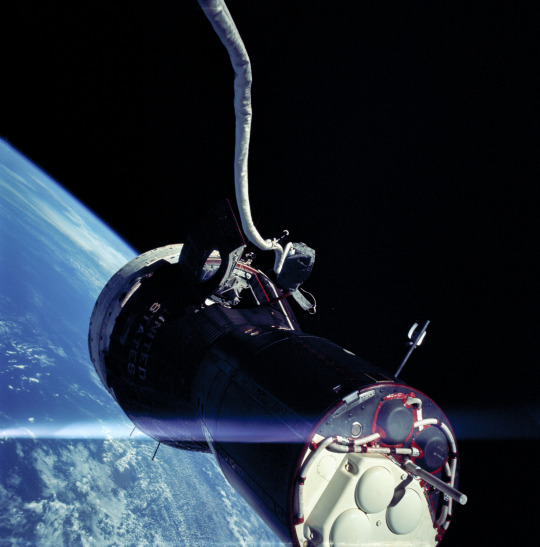
"'What a beautiful spacecraft,' said Gemini IX pilot Eugene Cernan during his two hour, eight minute spacewalk. He took this wide-angle photograph looking back at the window where command pilot Tom Stafford was watching."
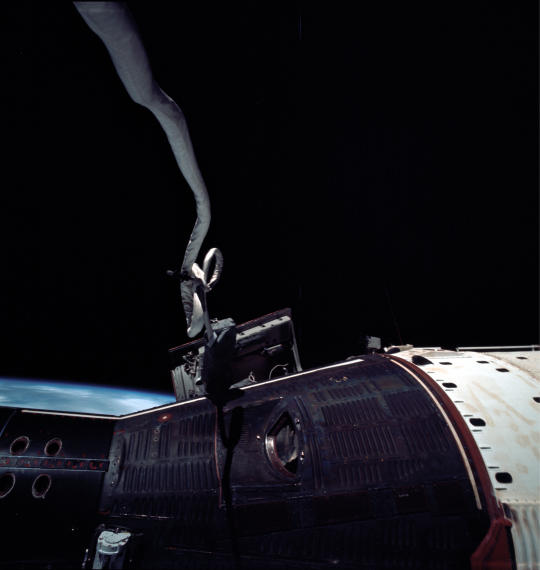

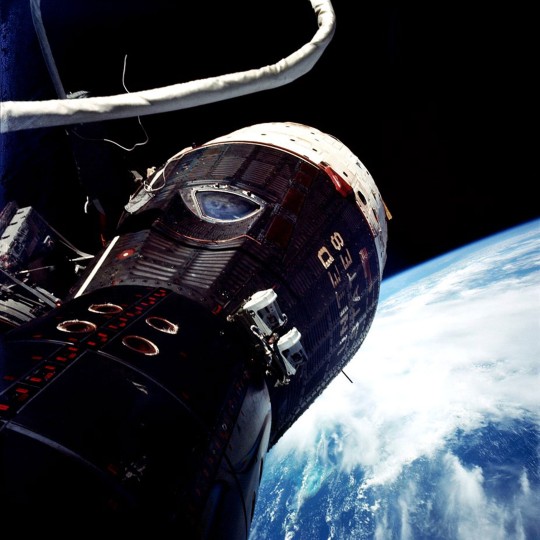
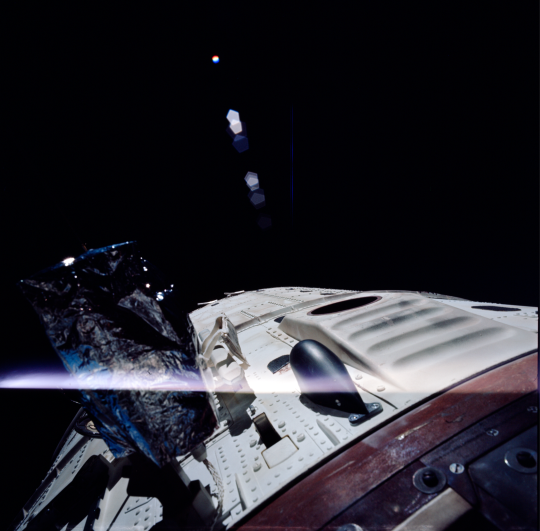
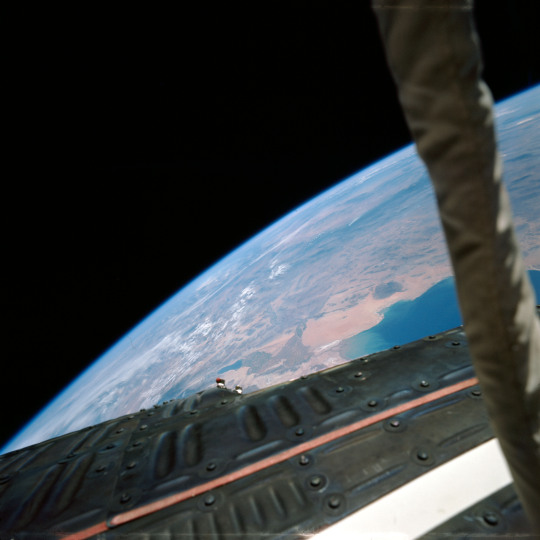
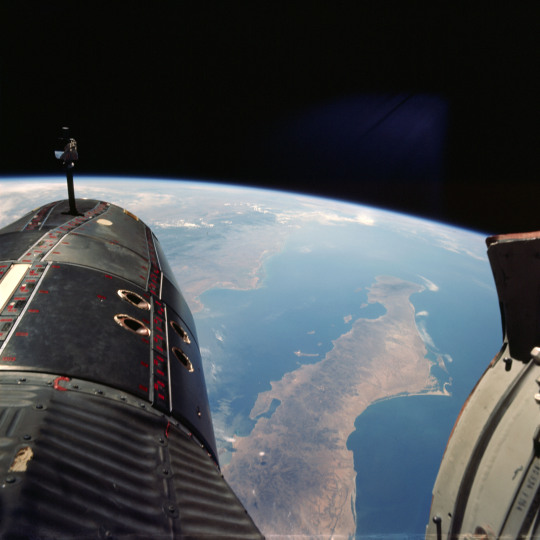
"Northwestern Mexico as seen from the Gemini-9A spacecraft during its 32nd revolution of Earth. The large penisula is Baja California. The body of water at lower right is the Pacific Ocean. The land mass at upper left is the State of Sonora. The Gulf of California separates Sonora from the peninsula."
Date: June 5, 1966
NASA ID: S66-38032, S66-38044, S66-38046, S66-38047, S66-38048, link, S66-37989, S66-38048, S66-38049, S66-38050, S66-38051, S66-38055, S66-38068, S66-38070
#GT-9#GT-IX#Gemini 9#Gemini IX#GT-9A#GT-IX-A#Gemini 9A#Gemini IX-A#SC9#NASA#Gemini Program#Project Gemini#spacewalk#June#1966#Eugene Cernan#Thomas Stafford#space#Earth#my post
248 notes
·
View notes
Text
Star Trek POP-QUIZ #3
( 21/10/2023 )
Question 1.
Which of these people were not a guest-star on Star Trek? a. Stephen Hawking b. Mae Jemison c. Seth MacFarlane d. Eugene Cernan
bonus question: Identify which episode one of these people appeared in.
Question 2.
What is the name of the play by Andrew Robinson and Alexander Siddig? a. The Nexus b. A Stitch in Time c. The Ex-Expatriate d. Letters from the Northern Continent
Question 3.
Which book was the planet in "A Piece of the Action" ( S2, E17 TOS ) based off? a. Chicago Mobs of the Twenties b. The Hotel Royale c. The Great Gatsby d. New York Gangs of the 1900s
bonus question: which other Star Trek series features a similar book as homage?
Question 4.
What is the name of the inhabitants of Risa? ( Spelling Counts! ) bonus question: what is the planet Risa known for?
Question 5.
TRUE OR FALSE: Voyager may have inadvertently aided an American presidential election.
Score: __/5 + 3 bonus points ( answers under cut )
Question 1.
d. Eugene Cernan ( an American Astronaut )
+ a. Stephen Hawking ( S6, E27 Descent TNG ) b. Dr Mae Jemison ( S6, E24 Second Chances TNG ) c. Seth MacFarlane ( S3, E20 The Forgotten S4, E15 Affliction ENT )
Question 2.
a. The Nexus
Question 3.
a. Chicago Mobs of the Twenties
+ Enterprise ( 2001 )

Question 4.
Risians.
+ Risa is known as the "pleasure planet", a popular vacation spot for various Federation species.
Question 5.
TRUE.

#star trek#voyager#the next generation#enterprise#risa#stephen hawking#dr mae jemison#eugene cernan#seth macfarlane#deep space 9#a stitch in time#trivia#pop quiz#my pwife hasn't seen this one#soooo I suppose I can't say it's gotten a 10/10 star rating
5 notes
·
View notes
Text

On This Day: Eugene Cernan is the last human to walk on the moon, and for good reason. Look, you were terrible guests. Kicking up dust in your little car, hitting golf balls, leaving your trash all over the landing sites. Come back when you can behave yourselves!!
2 notes
·
View notes
Text



Darn he was a babygirl
0 notes
Text
I often tell young kids, and particularly my grandkids - don’t ever count yourself out. You’ll never know how good you are until you try. Dream the impossible and then go out and make it happen. I walked on the Moon. What can’t you do?
-Eugene Cernan, Apollo 17
0 notes
Text
FOR ALL MANKIND:
Collected footage
NASA’s journeys to the moon
The beauty of space
youtube
#for all mankind#random richards#poem#haiku#poetry#haiku poem#poets on tumblr#haiku poetry#haiku form#poetic#documentary#neil armstrong#buzz aldrin#apollo 11#Jim Lovell#Ken mattingly#Russell schweickart#Eugene Cernan#mike collins#criterion collection#apollo 8#Bill anders#NASA#Stephen bales#Al Reinert#Frank Borman#Walter Cunningham#Jeff Denton#Charles Conrad#Richard Gordon
1 note
·
View note
Text
Now these Astronauts from Mercury to Apollo were the real deal Astronauts as cool guys.

April 1966... Gemini water egress training Gemini astronauts Eugene Cernan and Edwin Aldrin seen during water egress training for the Gemini program onboard NASA motor vessel retriever in the Gulf of Mexico. By April 1966, NASA had received 35 Omega Speedmaster chronographs while having 52 active astronauts. MoonwatchUniverse has been delving into archives to bring up a complete overview of how & when the NASA-issued Omega Speedmaster chronographs were distributed to prime & backup astronaut crews of the Gemini & Apollo era. Note for MoonwatchUniverse this is the earliest photo showing Edwin "Buzz" Aldrin wearing a NASA-issued Speedmaster. (Photo: NASA)
20 notes
·
View notes
Photo

2025 March 28
Lunar Dust and Duct Tape Image Credit: Apollo 17, NASA
Explanation: Why is the Moon so dusty? On Earth, rocks are weathered by wind and water, creating soil and sand. On the Moon, eons of constant micrometeorite bombardment have blasted away at the rocky surface creating a layer of powdery lunar soil or regolith. For the Apollo astronauts and their equipment, the pervasive, fine, gritty dust was definitely a problem. On the lunar surface in December 1972, Apollo 17 astronauts Harrison Schmitt and Eugene Cernan needed to repair one of their rover's fenders in an effort to keep the rooster tails of dust away from themselves and their gear. This picture reveals the wheel and fender of their dust covered rover along with the ingenious application of spare maps, clamps, and a grey strip of "duct tape".
∞ Source: apod.nasa.gov/apod/ap250328.html
141 notes
·
View notes
Text


#OTD 3/3/1973 President and Mrs. Nixon hosted an “Evening at the White House” in honor of Apollo 17 astronauts Eugene “Gene” Cernan, Ronald Evans, and Harrison Schmitt. Entertainment was provided by Sammy Davis Jr.
(Images: WHPO-E0370-15A and 31A)
66 notes
·
View notes
Text

Apollo 17 Lunarscape: A Magnificent Desolation - April 20th, 1996.
"Buzz Aldrin, Apollo 11 Lunar Module pilot and the second human to walk on the Moon, described the lunar landscape as "a magnificent desolation". Dramatic pictures from the Apollo missions to the Moon's surface testify to this apt turn of phrase. Near the Apollo 17 landing site, Family Mountain (center background) and the edge of South Massif (left) frame the lunarscape in this photo of astronaut Harrison Schmitt working alongside the lunar roving vehicle. Schmitt and fellow astronaut Eugene Cernan were the last to walk on this magnificent desolation."
67 notes
·
View notes
Text


"Astronauts Thomas P. Stafford (right foreground), command pilot; and Eugene A. Cernan, pilot, prepare to enter the Gemini-9 spacecraft in the white room atop Pad 19 during a Gemini-9/Agena simultaneous launch demonstration. This test is a coordinated countdown of the Atlas-Agena and the Gemini-Titan vehicles. NASA and McDonnell Aircraft Corporation personnel stand by to assist with the insertion of the astronauts into the spacecraft."
Date: May 10, 1966
NASA ID: S66-33407, S66-33406
#GT-9#GT-IX#Gemini 9#Gemini IX#GT-9A#GT-IX-A#Gemini 9A#Gemini IX-A#SC9#NASA#Gemini Program#Project Gemini#LC-19#Cape Canaveral#Kennedy Space Center#Florida#May#1966#Eugene Cernan#Thomas Stafford#my post
42 notes
·
View notes
Text

This Day in History: The Lost Apollo Missions
On this day in 1934, Eugene “Gene” Cernan is born. He would go on to become a pilot, an astronaut, and the 11th person to step foot on the moon. He was the last to reboard the lunar module during Apollo 17, which means that he was also the last person on the moon—at least, so far.
He wasn’t supposed to be the last, though. Did you know that there were supposed to be three more Apollo missions?
Apollos 18 through 20 were canceled. Thus, no astronaut has left low Earth orbit since Apollo 17’s crew returned from their trip.
The official NASA explanation is that budgetary considerations forced their hand, but others believe that the explanation is incomplete. The biggest expense—the hardware—was already built and astronauts were ready to fly.
FULL STORY: https://www.taraross.com/post/tdih-apollo-17
9 notes
·
View notes
Text

Apollo 17 commander Gene Cernan is photographed in the Taurus–Littrow valley, December 1972. A naval aviator, Gene Cernan was selected with the third group of NASA astronauts in October 1963. He became the second American to conduct an EVA (spacewalk) during Gemini 9A in 1966, almost perishing in the process. During Apollo 10 in 1969, Cernan and Tom Stafford flew the lunar module Snoopy to within 50,000 ft of the lunar surface. Apollo 17 was mankind's final human lunar mission to date, and Cernan is the last human to have left footprints on the lunar surface. He is also one of only three astronauts to have twice journeyed to the moon. Captain Eugene Cernan passed away in 2017, aged 82.
39 notes
·
View notes
Link
On Jan. 19, 1965, Gemini 2 successfully completed the second of two uncrewed test flights of the spacecraft and its Titan II booster, clearing the way for the first crewed mission. The 18-minute suborbital mission achieved the primary goals of flight qualifying the Gemini spacecraft, especially its heat shield during a stressful reentry. Recovery forces retrieved the capsule following its splashdown, allowing engineers to evaluate how its systems fared during the flight. The success of Gemini 2 enabled the first crewed mission to fly two months later, beginning a series of 10 flights over the following 20 months. The astronauts who flew these missions demonstrated the rendezvous and docking techniques necessary to implement the Lunar Orbit Rendezvous method NASA chose for the Moon landing mission. They also proved that astronauts could work outside their spacecraft during spacewalks and that spacecraft and astronauts could function for at least eight days, the minimum time for a roundtrip lunar mission. The Gemini program proved critical to fulfill President John F. Kennedy’s goal of landing a man on the Moon and returning him safely to Earth before the end of the 1960s. Cutaway diagram of the Gemini spacecraft. Workers at Launch Pad 19 lift Gemini 2 to mate it with its Titan II rocket. At Pad 19, engineers verify the flight simulators inside Gemini 2. Following the success of Gemini 1 in April 1964, NASA had hoped to fly the second mission before the end of the year and the first crewed mission by January 1965. The two stages of the Titan II rocket arrived at Cape Kennedy from the Martin Marietta factory in Baltimore on July 11, and workers erected it on Launch Pad 19 five days later. A lightning strike at the pad on Aug. 17 invalidated all previous testing and required replacement of some pad equipment. A series of three hurricanes in August and September forced workers to partially or totally unstack the vehicle before stacking it for the final time on Sept. 14. The Gemini 2 spacecraft arrived at Cape Kennedy from its builder, the McDonnell Company in St. Louis, on Sept. 21, and workers hoisted it to the top of the Titan II on Oct. 18. Technical issues delayed the spacecraft’s physical mating to the rocket until Nov. 5. These accumulated delays pushed the launch date back to Dec. 9. The launch abort on Dec. 9, 1964. Liftoff of Gemini 2 from Launch Pad 19 on Jan. 19, 1965. Engineers in the blockhouse monitor the progress of the Titan II during the ascent. Fueling of the rocket began late on Dec. 8, and following three brief holds in the countdown, the Titan’s two first stage engines ignited at 11:41 a.m. EST on Dec. 9. and promptly shut down one second later. Engineers later determined that a cracked valve resulted in loss of hydraulic pressure, causing the malfunction detection system to switch to its backup mode, forcing a shutdown of the engines. Repairs meant a delay into the new year. On Jan. 19, 1965, following a mostly smooth countdown, Gemini 2 lifted off from Pad 19 at 9:04 a.m. EST. The Mission Control Center (MCC) at NASA’s Kennedy Space Center in Florida. In the MCC, astronauts Eugene Cernan, left, Walter Schirra, Gordon Cooper, Donald “Deke” Slayton, and Virgil “Gus” Grissom monitor the Gemini 2 flight. In the Gemini Mission Control Center at NASA’s Kennedy Space Center in Florida, Flight Director Christopher C. Kraft led a team of flight controllers that monitored all aspects of the flight. At the Manned Spacecraft Center (MSC), now NASA’s Johnson Space Center in Houston, a team of controllers led by Flight Director John Hodge passively monitored the flight from the newly built Mission Control Center. They would act as observers for this flight and Gemini 3, the first crewed mission, before taking over full control with Gemini IV, and control all subsequent American human spaceflights. The Titan rocket’s two stages placed Gemini 2 into a suborbital trajectory, reaching a maximum altitude of 98.9 miles, with the vehicle attaining a maximum velocity of 16,709 miles per hour. Within a minute after separating from the Titan’s second stage, Gemini 2 executed a maneuver to orient its heat shield in the direction of flight to prepare for reentry. Flight simulators installed where the astronauts normally would sit controlled the maneuvers. About seven minutes after liftoff, Gemini 2 jettisoned its equipment section, followed by firing of the retrorockets, and then separation of the retrorocket section, exposing the spacecraft’s heat shield. View from a camera mounted on a cockpit window during Gemini 2’s reentry. View from the cockpit window during Gemini 2’s descent on its parachute. Gemini 2 then began its reentry, the heat shield protecting the spacecraft from the 2,000-degree heat generated by friction with the Earth’s upper atmosphere. A pilot parachute pulled away the rendezvous and recovery section. At 10,000 feet, the main parachute deployed, and Gemini 2 descended to a splashdown 2,127 miles from its launch pad, after a flight of 18 minutes 16 seconds. The splashdown took place in the Atlantic Ocean about 800 miles east of San Juan, Puerto Rico, and 25 miles from the prime recovery ship, the U.S.S. Lake Champlain (CVS-39). A U.S. Navy helicopter hovers over the Gemini 2 capsule following its splashdown as a diver jumps into the water. Sailors hoist Gemini 2 aboard the U.S.S. Lake Champlain. U.S. Navy helicopters delivered divers to the splashdown area, who installed a flotation collar around the spacecraft. The Lake Champlain pulled alongside, and sailors hoisted the capsule onto the carrier, securing it on deck one hour forty minutes after liftoff. The spacecraft appeared to be in good condition and arrived back at Cape Kennedy on Jan. 22 for a thorough inspection. As an added bonus, sailors recovered the rendezvous and recovery section. Astronaut Virgil “Gus” Grissom, whom along with John Young NASA had selected to fly the first crewed Gemini mission, said after the splashdown, “We now see the road clear to our flight, and we’re looking forward to it.” Flight Director Kraft called it “very successful.” Gemini Program Manager Charles Matthews predicted the first crewed mission could occur within three months. Gemini 3 actually launched on March 23. Enjoy this NASA video of the Gemini 2 mission. Postscript The Gemini-B capsule and a Manned Orbiting Laboratory (MOL) mockup atop a Titan-IIIC rocket in 1966. The flown Gemini-B capsule on display at the Cape Canaveral Space Force Museum in Florida. Former MOL and NASA astronaut Robert Crippen stands beside the only flown Gemini-B capsule – note the hatch in the heat shield at top. Gemini 2 not only cleared the way for the first crewed Gemini mission and the rest of the program, it also took on a second life as a test vehicle for the U.S. Air Force’s Manned Orbiting Laboratory (MOL). The Air Force modified the spacecraft, including cutting a hatch through its heat shield, renamed it Gemini-B, and launched it on Nov. 3, 1966, atop a Titan IIIC rocket. The test flight successfully demonstrated the hatch in the heat shield design during the capsule’s reentry after a 33-minute suborbital flight. Recovery forces retrieved the Gemini-B capsule in the South Atlantic Ocean and returned it to the Air Force for postflight inspection. This marked the only repeat flight of an American spacecraft intended for human spaceflight until the advent of the space shuttle. Visitors can view Gemini 2/Gemini-B on display at the Cape Canaveral Space Force Museum.
5 notes
·
View notes
Text
No cheating, please! Answer the trivia question to the best of your ability, then check below the cut! Please do not give away answers in comments or tags!
Answer below:
Charles Duke was 36 years old when he landed on the moon in 1974.
https://www.oldest.org/people/youngest-people-on-the-moon/
7 notes
·
View notes